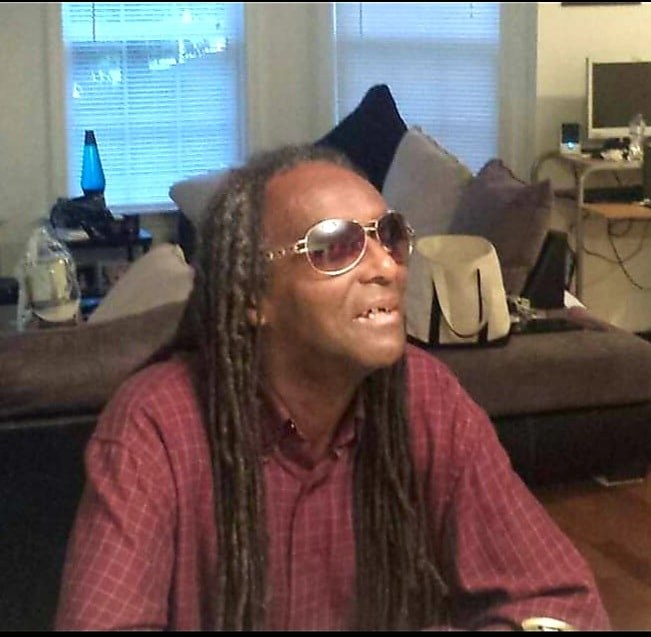
Gene Maddox was an awesome human being. He was a big part of my life, especially when I lived in Greene County, Tennessee during the 90s. Our friendship began inside Tabernacle Presbyterian Church, a historic Black congregation who welcomed Jennifer and me with open arms soon after we moved to that part of God’s country.
Gene and I hit it off from the start due to our shared interest in civic activism and cross-cultural exchange. He kept local heritage alive for the Black community and he shared that heritage with everyone. Gene’s insights were a gift to all who spoke with him, from stories about the legacy of George Clem School to recollections about Eighth of August freedom celebrations. His informed leadership contributed to groups like the George Clem Multicultural Alliance, the Greeneville Heritage Trust, the Greeneville Organization for the Blind, and the Greeneville City Schools Diversity Committee. Many people knew him as the voice of Rural Resources, a not-for-profit group that supports food security and farmland preservation.
A consummate people-person, Gene was equally fun to be around at church potlucks, rap concerts, strategic planning sessions, or just hanging out. Once he invited me to a local tavern and we conversed at length with the owner about social justice, Venetian art, and the volatility of malt liquor. There’s so much I could write and still wouldn’t scratch the surface of his presence.
So I’ll just share a little story.
Once Gene and I went for an afternoon drive so he could show me the farm where he grew up. It was an enlightening journey from the get-go, because I’d never driven with a visually-impaired navigator before. Google did not exist and it wouldn’t have mattered. Our destination was not on any map, except the one in Gene’s mind.
While driving I described our surroundings and Gene gave directions based on memories from his childhood, before losing his eyesight. At one point we pulled up to a stop sign and he said “now across the road there’s a beautiful barn next to a great big pasture.” I informed him that in front of us stood an opulent house beside what looked like an access road to a future subdivision.
This back-and-forth continued as we explored the formerly rural neighborhood. It was hard to get our bearings amid the suburban shift, yet Gene clearly sensed the lay of the land. At one point we were backtracking, going by a spot we’d passed several times. I mentioned a little tarpaper shack off in a field with a realty sign announcing an upcoming land auction.
“That’s it!” he said.
We parked beside the road and walked to his old homeplace, weathered and obviously uninhabited. He ran his hands across the grainy sides of the building. Poking through the weeds I looked into an open window, told him the place seemed mostly empty except for a few scattered items. There was a rickety table with a blue glass insulator sitting on top, like the ones I’ve seen for sale at area flea markets.
“Mom really liked those,” Gene said. “She collected them.”
I was blessed to visit Mrs. Daisy Maddox at her home where she lived with Gene in the Wesley Heights community. She was a respected elder, and something she said stuck with me. I remember she talked about the lives of Black children, how little kids often played across the color line drawn by misguided adults. Mrs. Maddox said many of those friendships withered after young folks attended school, particularly when they left the area for college.
New relationships can offer a chance at course correction. Maybe that’s part of the reason why I crawled through that window and retrieved the insulator from the abandoned house. Gene moved his hands over the memento, smiling at its tactile glass ribs. Having met his mother I was especially gratified to witness this moment, when part of a treasured world was revived by way of something lost and found.
By the time we got back in the car, Gene was wholly oriented to the terrain. He pointed to a spot in the distance where he said there was an old African-American cemetery, overgrown and hidden amid the shifting landscape. I looked at the patch of woods and marveled at what I saw.
“You may not believe this,” I said to him, “but right now a rainbow begins at that exact location.”
Gene spread the word about local wonders, stirred up magic and built relationships in the process. Society is wiser because of his community activism. For example, New Hope Cemetery is now beautifully landscaped and accessible, in keeping with its sacredness. I encourage folks to visit that sanctum of community spirit at the junction of New Hope and Old Shiloh.
On the First of February I received news of Gene’s death. I also noted it was the start of Black History Month, a good time to reflect on ways that friends like him have enriched my life.
Recently a buddy observed how history is often reduced to short lists of famous names and abbreviated bios. God bless Gene Maddox for reminding us that we’re all part of a multi-hued story made by thoughts and words and actions.
Wonderful story, thank you.
May Gene rest in peace. Thanks for the story, Brother Watt.
Watt, thank you for this moving tribute to a vibrant soul and friend. Some people find rainbows. Others traverse with them firmly inside, lighting and bringing a spectrum of colour where ever they go…